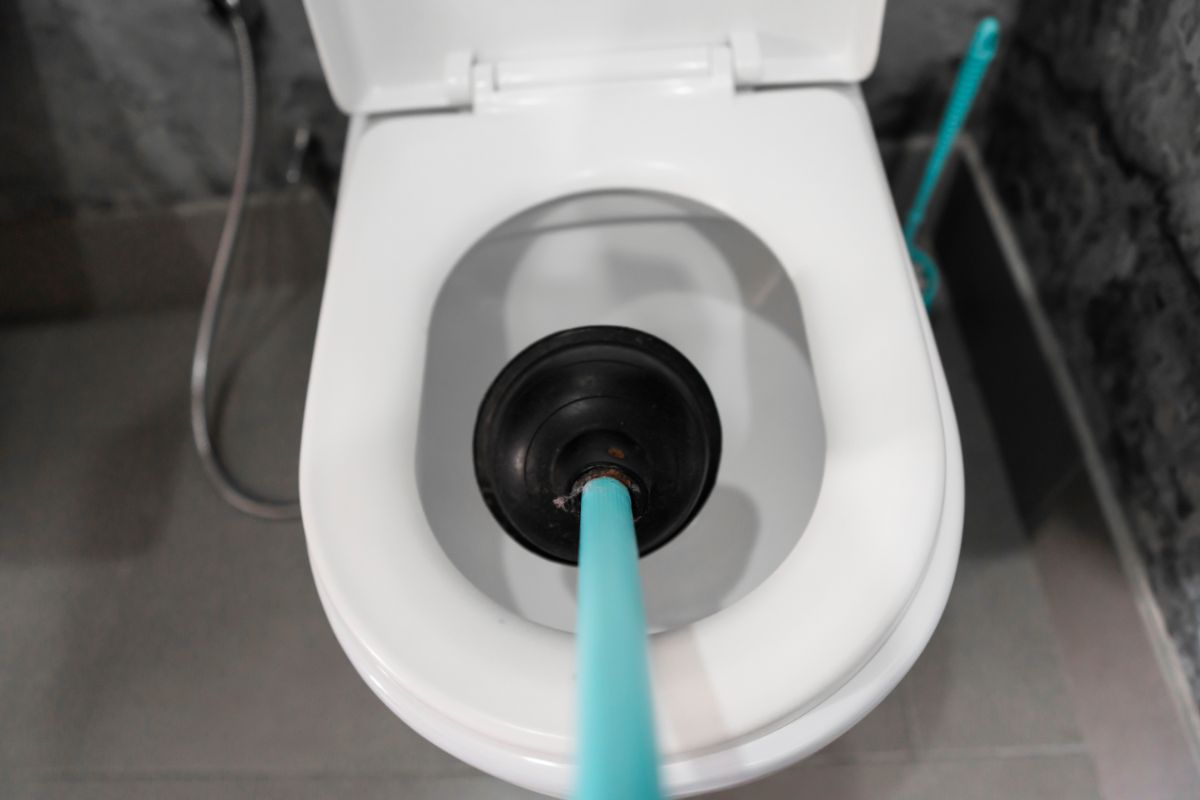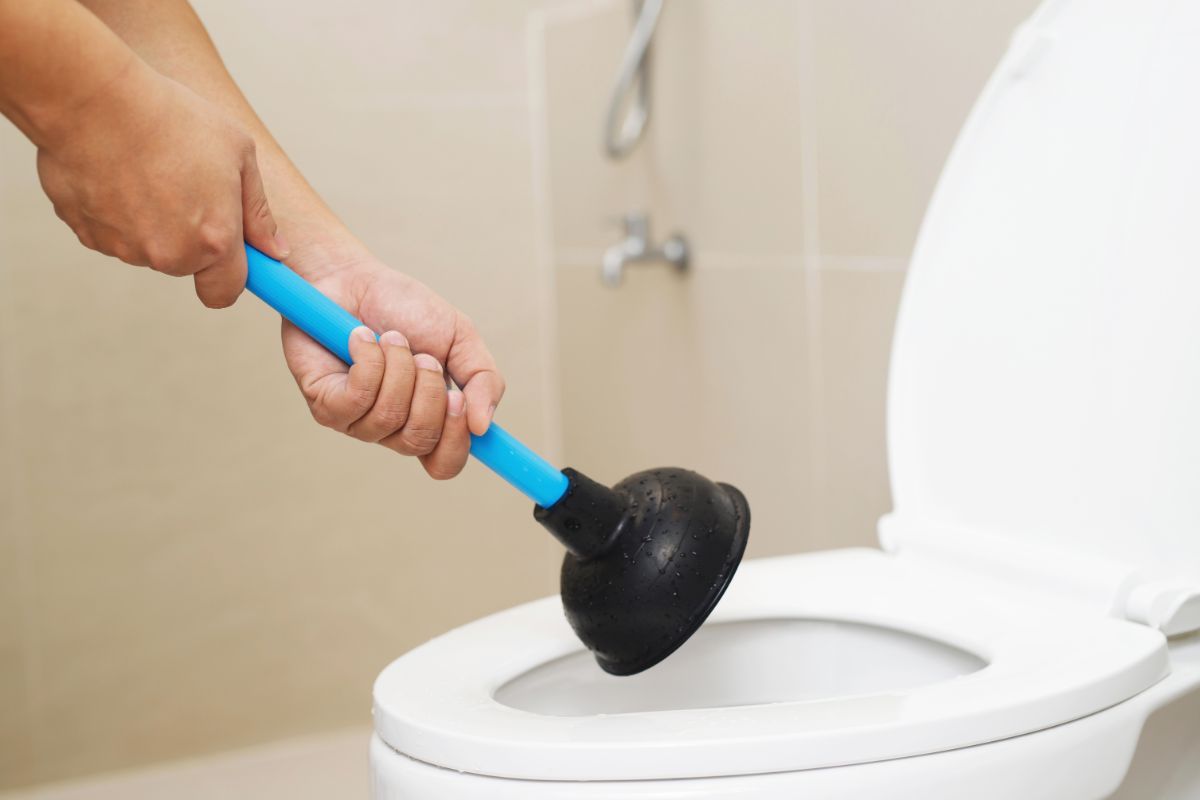Are you looking to learn how you can vent your toilet? If so, you’ve come to the correct place! In this article, you will learn the best and simplest way that you can plumb a toilet. This will be done using some simple DWV fittings.

There are a few different ways that you can vent a toilet, but this article will explore the easiest way to do this. Let’s dive in!
3 Things To Understand When Plumbing A Toilet
1. The Toilet’s Drain Size
No matter what your plumbing code is, the minimum drain size for a toilet is around 3 inches.
If your water closet flushes 1.6 gallons of water or less, it will be rated at 3 Drainage Fixture Units (DFUs).
In older toilet models, if you flush over 1.6 gallons of water in each flush, this will be rated at 4 Drainage Fixture Units (DFUs).
What Is A DFU?
A DFU, or a Drainage Fixture Unit, is the unit that indicates how much discharge a particular plumbing fixture will produce.
Drain pipes are only able drain a certain number of DFUs. For instance, the IPC allows you to drain 42 DFUs on a 3-inch building drain.
The UPC allows 35 DFUs to be drained on a 3-inch horizontal drain.
2. The Toilet’s Vent Size
Every toilet needs a vent, and this is a very important part of your plumbing. The size of this vent pipe will depend on the local code for plumbing.
For instance, if your code is the IPC, then the individual vent size of your toilet will be 1.5 inches. This is because the individual vents on the IPC are all sized at no less than one-half of the diameter of the drain that is served.
The minimum drain size for a water closet is 3 inches, so half of this drain size will be 1.5 inches.
To install a vent of this size, you will need to use a 3x3x1.5 inch wye. This is for an IPC only.
With the UPC, your toilet’s vent will need to be 2 inches. To install this, you will need a 3x3x2 inch wye. You will also need a 2-inch street 45 to vent this toilet.
With UPC jurisdictions, it is very common for one of the toilets in the home to be plumbed using a 3-inch vent. This is to ensure that the vent meets the UPC’s aggregate venting requirement.
The UPC wants the building to be properly vented, so the vent pipe will need to be the same diameter as the building sewer.
One way to meet this requirement is by ensuring that you plumb one toilet with a bigger vent, perhaps 3 or 4 inches in size.
3. The Trap Arm Length Of The Toilet
The toilet’s trap, which is also known as the fixture drain, is the pipe that exists between the vent and the trap. This distance will depend on the local code for plumbing.
If you are with the IPC, there are no limits when it comes to the length of the toilet’s trap arm. This means that you can have an unlimited distance on your fixture drain.
Your toilet will still need a vent, but the trap arm can be as long as you would like.
However, if you are with the UPC plumbing code, they are not as lenient with this. In the UPC, you have a limitation of 6 feet when it comes to the distance between the toilet trap and the vent.
The UPC wants this measurement to be taken from the face of the closet flange and then along the centerline of the pipe. It will then be taken to the inner edge of where the vent opens.
You will need to make this distance 6 feet or less if you are sticking to UPC jurisdictions.
This is the case even if you plumb your toilet with a 4-inch drain. The distance between the trap and vent will still need to be 6 feet.
Other Important Things To Remember When Plumbing A Toilet

When you are working with plumbing fixtures, you will need to remember to have around 2-4 inches of standing water in a trap.
This is known as the trap seal, and it blocks any sewer gas from entering your home.
Toilets have internal traps, so you don’t need to install this trap yourself. If you do, this will be a serious violation because the second trap will interrupt the flow of the drainage.
When you open the lid of your toilet, you are going to be looking at the top of the trap seal in the toilet.
Other Tips And Tricks For Venting And Plumbing A Toilet
Understand The Waste Pipes
It is important to understand the waste pipes in your building. These waste pipes remove water and waste from your toilet.
Every building will have a central pipe that is the control center of this wastewater. The waste will be carried from this pipe to your sewer or septic tank.
Learn About Drain Pipes In Your Building
Drain pipes are attached to every sink, shower, bathtub, and other appliance that contains water. These pipes are equipped with a P-trap, or they have a bend in the pipe below the sink in the shape of a P.
The water will collect in the P, blocking the pipe. This prevents any gas and odors from getting into your house from the drain pipe. This water is refreshed whenever any water is let into the P or the trap.
Understand Vent Pipes
It is important to understand how vent pipes work to understand this process. They run from the waste pipes and go upwards. They usually end outside of the building, sticking out through a roof.
This will allow any dangerous fumes or odors to leave your home safely, and enter the air outside. This also allows the water to move through the pipes freely, letting the water flow smoothly through the pipes.
What To Get At The Hardware Store
When you go to the hardware store, you will need to ensure that you know what you are purchasing. You should get some pipe, materials for joining, and some fittings.
You will need to measure the amount of pipe you need before you go, and then let the employees in the store know how much you need.
If you have any questions about your project, often the staff at hardware stores will be able to help you out if you are unsure.
Plumbing is quite a difficult thing to get your head around, so if you are ever unsure, make sure to enlist the help of professional plumbers, even if it is just to check your work. You don’t want to end up with a botched job!
Final Thoughts
So, there you have it! After reading this article you should now understand how to vent and plumb a toilet in 1 easy pattern.
There are a few different methods for doing this, but the method explored is the easiest.
